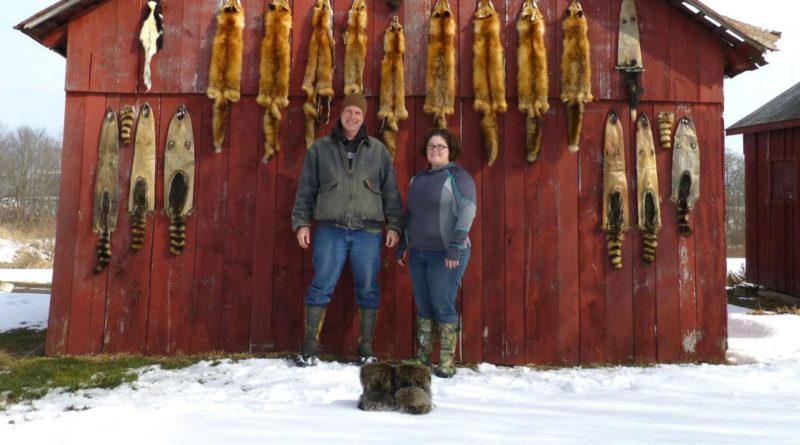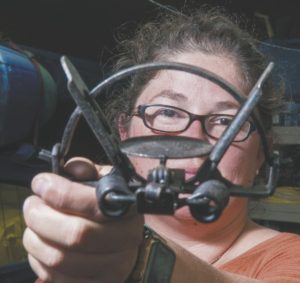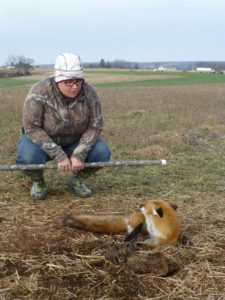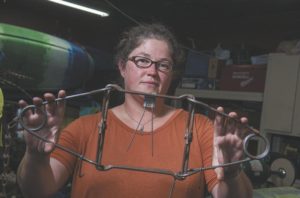Pennsylvania trapping trends positive despite low fur prices, stigma
Some of Jolene Connelly’s best childhood memories involved time spent with her grandmother, who worked at a garment factory that dealt with furs.
“I would sit on the steps in her attic and pore through boxes of fur swatches trying to identify the animals they came from,” said the 35-year-old Selinsgrove woman.
Those moments helped spark her interest in trapping, becoming one of a growing trend of women participating in an activity that is shrouded in negative stigma involving animal welfare.
“I am an animal lover, and I assure you that if I thought that trapping would put any animal under a large amount of stress, I would find it hard to participate,” she said. “Any time you see the number of trappers dwindle, you see more diseased animals with mange, distemper and other issues, along with more human-animal conflict. Trapping is a vital part of our conservation that helps animal populations stay healthy and happy.”
An industry leader
The state of trapping across Pennsylvania is holding steady, despite a several-year low in fur prices, according to Pennsylvania Game Commission trapping biologist Matt Lovallo.
“We have historically been one of the leading states with one of the oldest and most organized trapping associations out there,” he said. “Over the past 20 years, while some states have struggled to maintain their ranks of trappers, Pennsylvania has had a pretty steady increase.”
Fur prices are influenced by international trends, according to Lovallo, who added that historically, the Asian market has been a major player for U.S. furs, but recent political shifts have impacted the trade market and ultimately the prices.
According to Barry Warner, public relations director for the Pennsylvania Trapping Association, there are 11 different trapping districts across the state, each holds its own series of specialized trainings — and the participation in those sessions has been noticeably healthy.
“One thing we’re seeing now are individuals that trapped in their younger years — that had married and were forced to go to work — their children are growing up and showing interest and they want their kids to have some of the same experiences.”
A series of new trapping opportunities has helped keep the interest up, according to Lovallo.
“Many people who were involved in the trapping heydays of the 1970s and 80s may not find today’s prices that appealing, but the game commission has done a great job of offering new opportunities in the state thanks to the conservation efforts of trappers,” he said. “In 2000, we were able to offer the first bobcat trapping season. In 2005, cable traps were legalized and offers new opportunities. In 2016, we had our first controlled fisher trapping and just this year, we were able to add some opportunities for river otters.
“Each time there is a new opportunity that our resources can sustain, we see an influx of new trappers, and they seem to stick around well afterward.”
Welcoming community
Connelly started trapping when she had an abundance of predators on her property that was once great for rabbit hunting.
“Pennsylvania has a lot to offer in terms of educating new trappers. I spoke to a local fur buyer, and he put me in touch with a local trapper and a few friends and I paid for a private lesson,” she said.
That led to her taking a cable restraint course through the game commission, and got involved with the Pennsylvania Trappers Association’s local trapper training school.
“Everyone in furtaking seems to be willing to talk and give pointers or chat about what works for them,” Connelly said.
Outside of learning the best way to set traps and harvest targeted species, Connelly has garnered a better appreciation for what trapping really is — and the misconceptions surrounding it.
“Most people are unfamiliar with trapping in general — and when they picture trapping in their minds, they think of a cartoon-esque bear trap with large, point teeth,” she said. “However, trapping is a highly regulated activity. Many people don’t realize the amount of research that goes into best management practices that make sure trappers are using the most humane traps.”
There are many things trappers do in order to make an animal’s discomfort as minimal as possible, she added, such as using off-set jaws or adding extra swivels to their sets.
“When I walk up to a set where I have successfully caught an animal, it is typically laying down or even asleep,” she said. “Often after releasing a non-targeted animal — yes, we can release animals from our traps unharmed — it will hang around while you remake the set before wandering off on its own accord.”
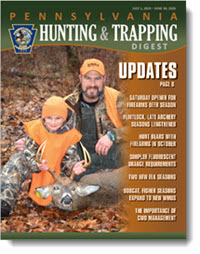
Educating the public is a key component in helping offset the stigma and myths surrounding the activity, according to Warner.
“There are programs offered at fairs and other public events, and we have pamphlets available that explain how traps work and how humane they have become thanks to a multi-million dollar effort across numerous states over the past 20 years to develop the best traps that are both effective and minimally invasive,” he said. “Pennsylvania laws are very stringent, and we emphasize the importance of ethical trapping.”
Among the evolution of trapping best practices, Pennsylvania only allows body-gripping traps for beavers that can only be used in waterways — not on land, according to Warner. Foot-hold traps are regulated by size, and teeth have been outlawed for quite some time on traps used today.
“There are even in-line shock springs that when an animal in it moves, it reduces the shock on any lunging animal,” he said. “We use them to trap and transfer animals all the time. There is no element of danger when properly using legal traps today.”
The best way to fight the public stigma surrounding trapping, according to Lovallo, is for trappers to be mindful of how they carry themselves.
“Be conscious of how you appear to the public in how you display your harvest, how you share photos on social media, and be sure to communicate the positive aspects of trapping,” he advised.
Connelly agreed.
“The best thing a trapper can do is uphold a positive image by educating themselves about regulations and how to best use trapping for conservation,” she said. “Don’t be afraid to have respectful dialogue with someone about trapping. Every year, my boyfriend and I put on a trapping demo for our dog training club in the event they encounter a trap with their pet.”
The other thing Connelly advises trappers to do is to be judicious when in the field.
“Always be sure to follow regulations, check traps frequently and avoid trapping along popular recreation areas,” she said. “One of the biggest challenges in trapping is being out there every day checking your traps. It doesn’t matter if there is inclement weather or you’re sick, you have to check your traps — it is what’s best for the animals, plus it’s the law.”
Promising future
Connelly’s growth in the sport has placed her in an advisory role. She helps with trapper trainings and recently helped instruct young people in a hunter safety course at the Kreamer Sportsman Club.
One of the first rules of successful trapping, she admitted, is “location, location, location.
“You need to look for signs and know where the animals are by looking for tracks, scat or trails,” she said. “Next, know what you’re targeting and cater to that animal by using appropriately sized traps and baits and lures that are specific to the animal.”
It is also very helpful to find a trapping mentor.
“Talk to everyone you can that traps. Go to conventions or sign up for a class,” she said. “You’ll be surprised at how friendly and helpful everyone can be.”
Trapping can be very challenging when you consider the bigger picture, Warner added.
“The pan that activates the trap is about two square inches. Many of the animals we trap range about two square miles,” he said. “So basically, we are trying to get an animal covering two square miles to step on a pan that is two square inches. That takes education, experience and practice — and a lot of patience.”
An evolving mindset has Lovallo extremely excited about the future of trapping.
“Trappers are motivated by different things today than they were in the 1970s and 80s,” he said. “They aren’t doing it simply to get some sort of money for a pelt, but instead for the challenge of better understanding the animals, improving our conservation and reconnecting with nature with their families. With that focus, we will continue to see an increase of responsible, ethical trappers that will shatter old-fashioned stigmas and really make a difference in our state.”

